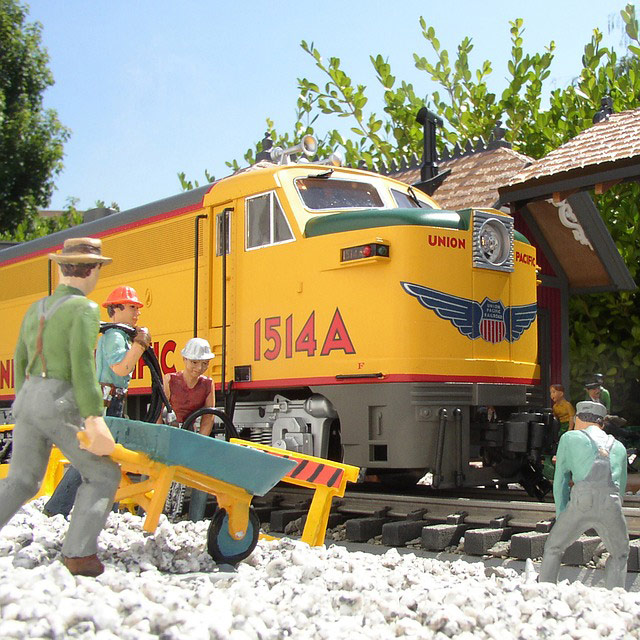DCC in the garden
| Large Scale |
|
Garden railroads |
Using Digital Command Control outdoors versus indoors is almost the same. The only exceptions are for larger boosters and larger power supplies due to the larger nature of the scale. Also, you'll need to protect your electronics from the outside elements.
Advantage of DCC in the garden
Putting DCC in the garden does make things easier. For instance, no more digging up your masterpiece to run a new wire for a block, rail turnout, or even building lighting. You can have signaling without an unsightly amount of wire. And let us not forget about the world of sounds that only DCC can control. In its simplest form you need only run the track bus and feeders - this is no more complicated than a simple traditional setup, yet sound and complex locomotive lighting can be controlled.
Distance between feeders
Here are some recommended quidelines for track feeders in the garden:
- 12' (4m) (or less) is a good rule. 14AWG feeders with railclaims for optimal performance. This helps with ensuring your trains don't slow down between feeders and helps ensure your DCC short circuit protection works incase of a short by not letting the magic smoke out. You do want this to be a trouble-free railroad, right?
- 18' (6m) should be your limit. At 18' (6m) distances, you will want to use at least 14 AWG feeders and stainless steel clamps. At the longer distance, the voltage drop across the rail might be noticeable to some. Also, the short circuit protections of your booster may fail.
- At longer distances you have to worry about the voltage drop, short circuit protection, and the quality of the joints. With a garden railroad, who wants to be digging up feeder buses to add more feeders? Or fix joints that have broken or corroded?
DCC Decoders
There are DCC decoders made specifically for use with large scale locomotives. The important parameter is the maximum voltage. The NMRA DCC standard allows for a maximum of 27 volts on the track (which is 54V peak to peak). Decoders meant for smaller scales such as HO have a much lower voltage and current limits.
Decoders designed for large scale applications may not meet NMRA standards, which means their destruction is assured on a DCC system that outputs a higher voltage. Decoders are also designed to handle the larger current draw of motors in a much larger and heavier model. Check the specifications of any decoder you wish to install to make sure it is appropriate for the application and will work with your DCC booster's voltage output. There is also no reason you cannot reduce the voltage, which will impact the top speed. If you are running slow trains, you would never notice. Remember that reducing the voltage means more current is drawn to produce the same amount of power at the motor, which could be a problem if the decoder can't dissipate the heat or handle the current.
